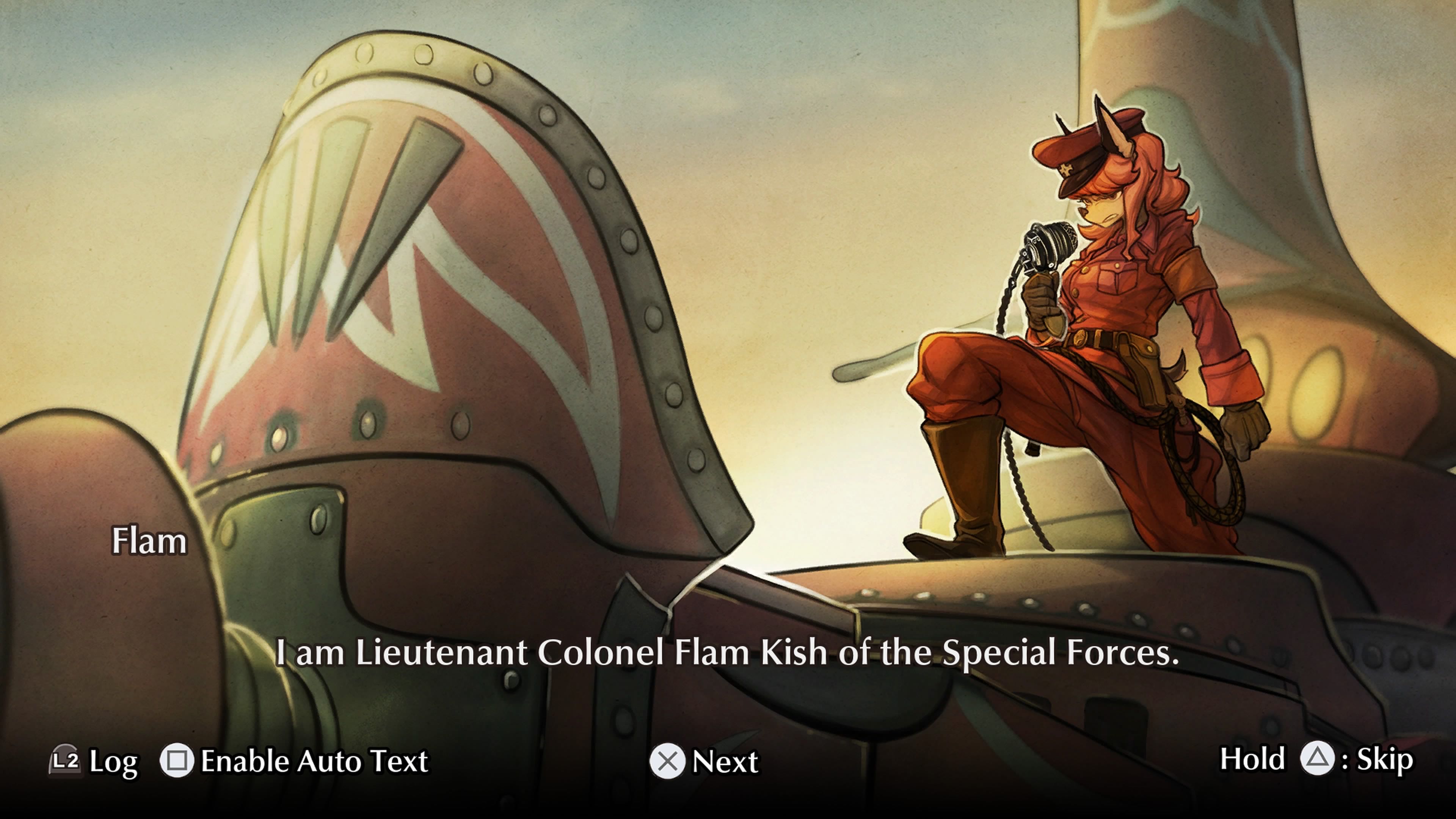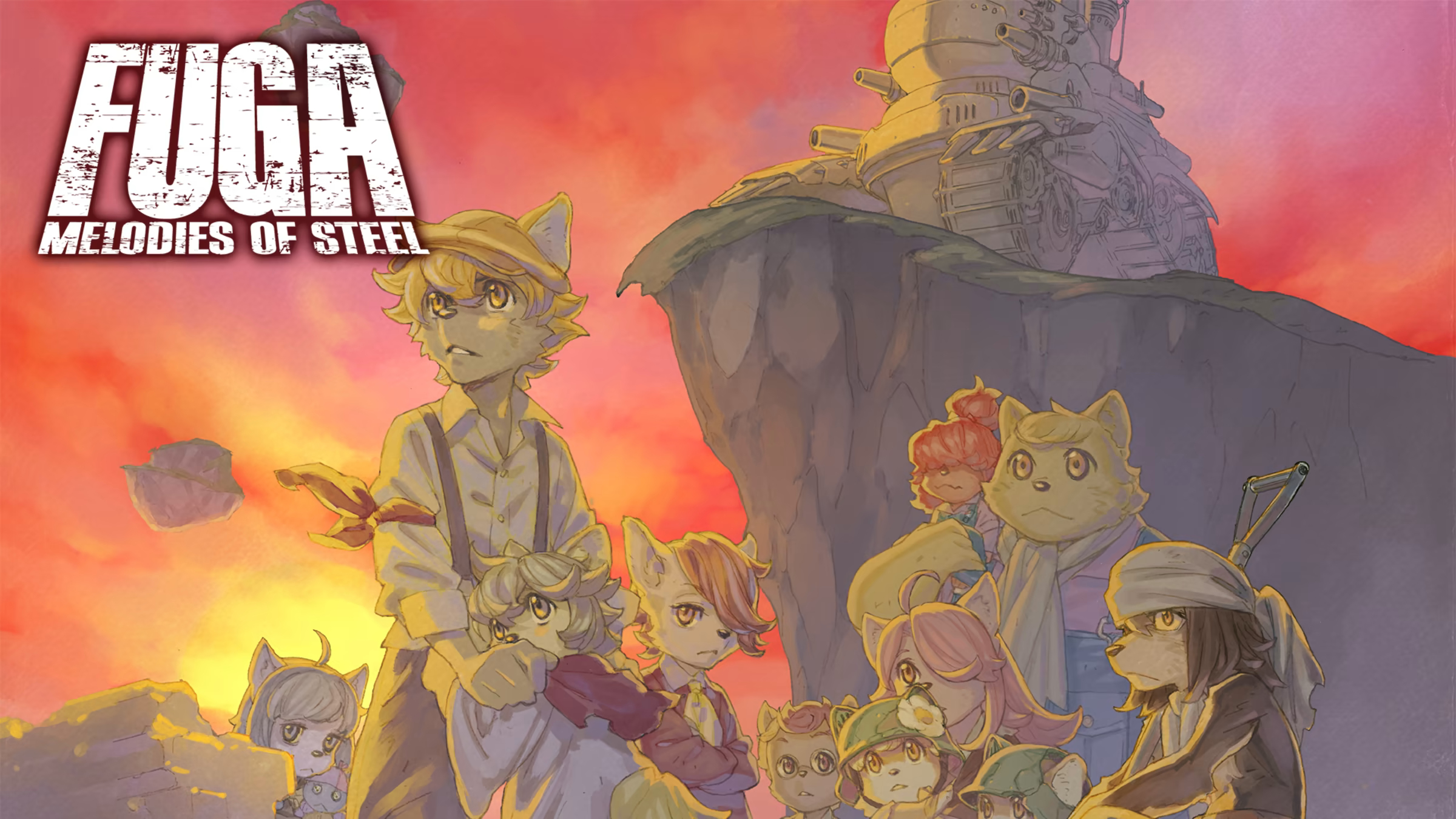
Imagine, if you will, growing up in an idyllic countryside village. It’s a small, farming community in which you live with your family and friends. Your biggest worry is making sure that all of your chores are complete and your homework is done.
And then the flames of war consume everything around you. You and your friends are forced to deal with the weight of reality as your families are stolen from you, and you have two choices: Die in the dirt, or get into a war machine and fight. With a thirst for justice and a prayer, the six of you climb aboard and start the engine.
That is the base premise of Fuga: Melodies of Steel, the 2021 TRPG released by Cyberconnect 2.
The Fuga franchise is one that I was interested in from the moment it was announced, but also one I kept putting off getting into until an absolute banger of a sale finally got me to buy the first two games.
Having completed (and platinumed!) the first game, I can confidently say that I am an idiot for waiting so long. But why do I feel that way? Let's get into it!
The Gameplay
Fuga is a game that is simple on the surface.
You have a selection of kids (you start with 6 but get some more as the game goes on) that all have a specific weapon type and sets of skills, based around different uses such as armor reduction, damage dealing, status effects, etc. You have three turrets (each turret has a "gunner" seat and a "support" seat) on your tank and can put any kid in any slot of your choice.
In each chapter, you automatically move along a map with different tiles that trigger battles, heal you, give you items, and so on. You are able to pick the difficulty of some of your routes, but otherwise you are completely on rails. Several times per chapter, you will have an intermission tile where you get to perform tasks to help support your battle, such as have the kids interact with each other and build up affinity (higher affinity levels upgrades support effects and unlocks powerful Link Attacks between the pair), farm ingredients to cook for meals that can boost stats, and using items to upgrade your tank.
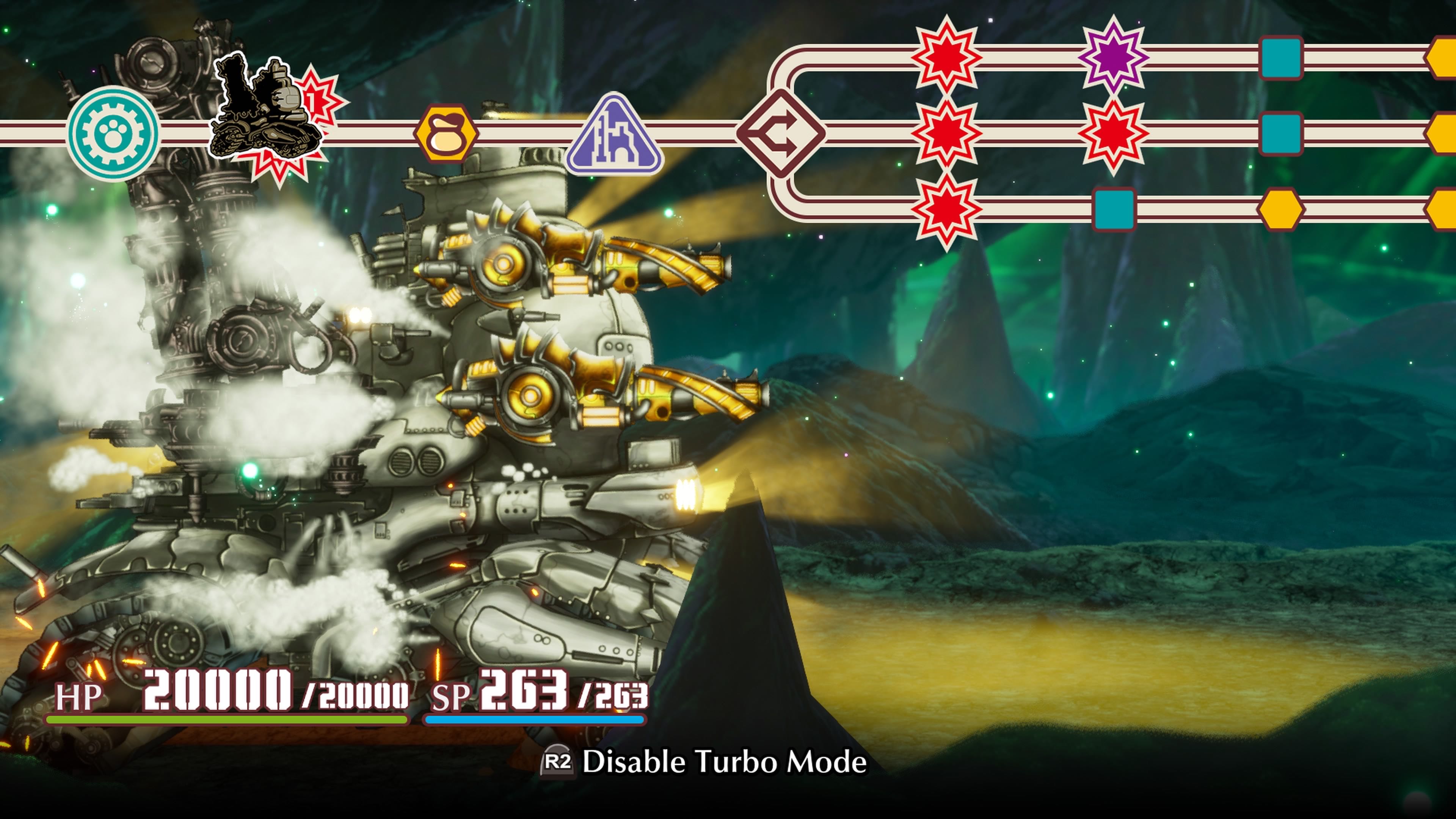
The fights are turn-based with a turn order that can be altered by both you and your enemies, such as by attacking your opponent’s weaknesses, using speed-boosting abilities, or by getting hit with delaying attacks. Every few turns you're allowed to switch your characters around however you want to focus on whatever you feel is the most important focus in the active battle, but each time you switch, you're locked in with that selection for a few more turns.
This is where the strategy comes in. Every battle has you grappling with multiple decisions.
- Who do I want on what turret?
- Who is the best support for them?
- Do I want to focus on delaying my enemies or should I gamble on trying to inflict a status effect?
- The enemy attack is next move. Should I guard at low health or try to heal and take the full attack?
I found this to be a great blend of simplistic gameplay mixed with complex strategy! The basics are easy to grasp, so the game is able to start presenting you with these challenging gameplay moments rather quickly.

That being said, it does have its issues. For one, status effects (especially stun) are basically THE strategy to use and so as soon as you unlock attacks that allow it, every fight becomes a race to see how fast you can inflict stun on your enemies before you bother actually trying to lower armor points and health.
Did I say armor points? Let’s talk about armor points! This is a system where some enemies have a number of layers of armor that you have to have your machine gunners erase before your grenade launchers and cannons can deal full damage. In the beginning, this is a great system! It forces you to engage with the battle system in a more complex way, choosing between trying to inflict status effects, lower armor so you can then tear through unarmored foes, or just attempt to attack through it all with enough firepower for it to not matter.
In the later game, however, you reach a point where the enemy health bars alone are inflated enough to make battles not be steamrolls even with high-leveled characters. As a result, tacking on several armor points for many enemies means that late game battles can be an absolute slog. I know that on my 2nd playthrough for the platinum (more on that later!), I still had to spend plenty of time on that run despite my characters all being leveled up into the 40s and 50s due to those damn armor points and health bars. Free me!
The Soul Cannon
The biggest gameplay advertisement for Fuga is the soul cannon. During chapter boss fights, having your health reduced to the halfway point unlocks the use of the soul cannon, a one shot boss eraser with a heavy cost:
You have to permanently sacrifice one of your team.
The weight of this choice is intense. The game gives you this massive, imposing, warning in deep purple:
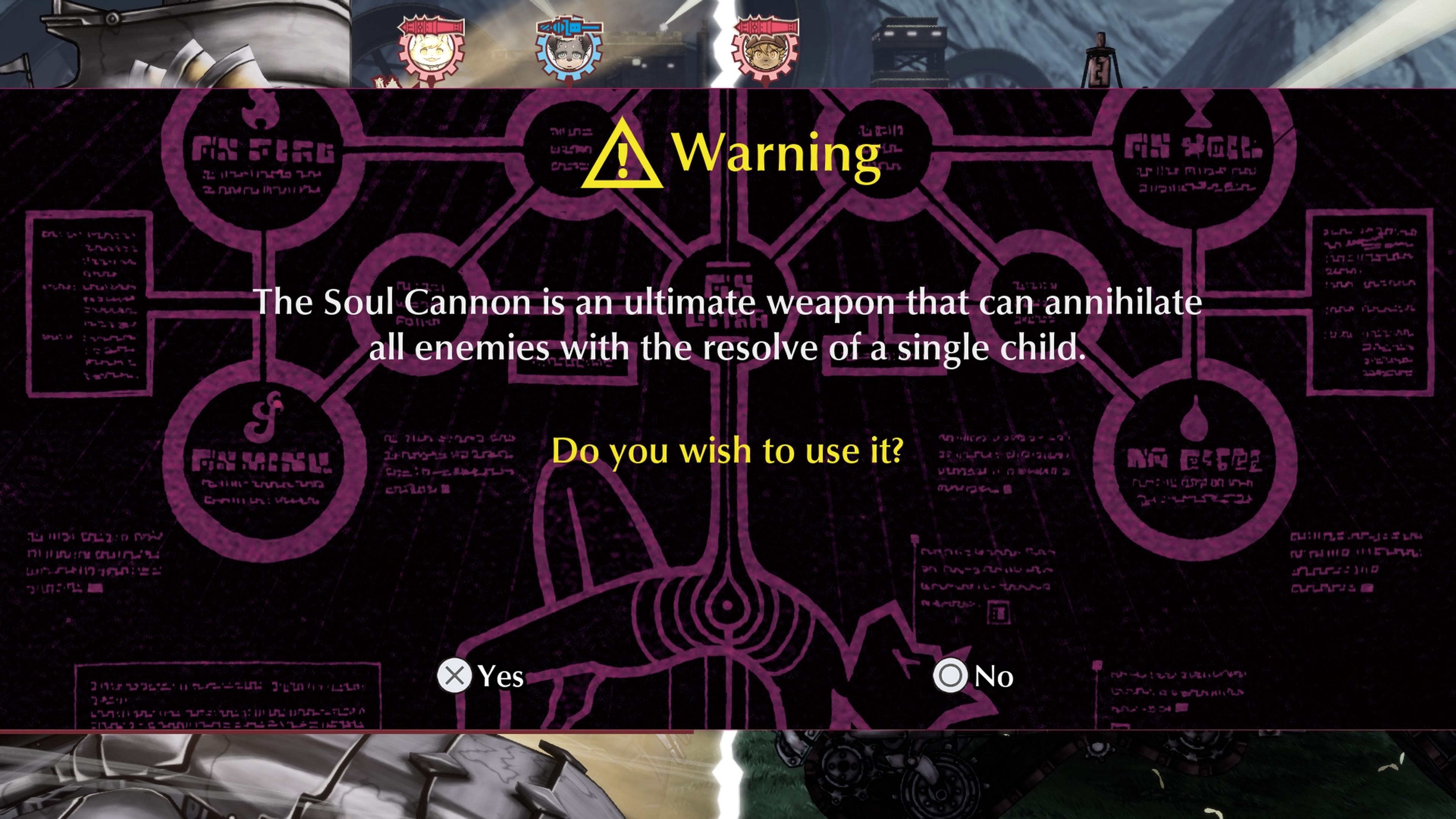
If you choose to continue, the game asks you to pick a child. Each child expresses feeling some form of stress over the situation, and upon selecting one, you get a first-person cutscene of the character walking into the soul cannon chamber, then a scene of the cannon firing and completely erasing the boss you were fighting.
You cannot walk this back. The game autosaves and the child is lost. You will never have access to them for the rest of their playthrough. They are removed from the story as a whole, and the only reminder you have of them is a memento left behind.
It sucks! It’s heartbreaking! You feel like absolute garbage for doing it and the game makes sure you know you screwed up by locking you out of the true ending. It makes you desperate to not use it.
So don’t. It’s very easy not to!
This is one of the game’s biggest flaws to me. The game makes it a big deal of pointing out that the soul cannon has become available in fights, but you can just not choose to use it and instead play a little better. If you lose the fight, don’t worry! You just go back to the previous intermission point, which is usually right before the boss fight so you lose basically no progress.
So why would I bother putting a permanent damper on my playthrough when at worst I lose ten minutes of my playthrough? The game actively gets harder as a result of using the soul cannon because you lose access to an entire child’s worth of skills and support, so instead of existing as a desperate panic switch, it’s more of a “Ugh, alright I’m bored with this fight” button that makes you more likely to press it next time because you’ll pull up to each boss fight with less and less of your overall kit available.
I do have to acknowledge that I’ve heard the sequels solve this issue by making it less optional! But in Fuga 1, it’s a massive misstep.
Plot and Presentation
I’ll be honest, I don’t have a lot of complex thoughts here so this section will be short.
The plot is solid! It takes some pretty heavy reference from World War II, with the protagonists being from France–Sorry, I mean the Free Lands of Gasco, and the enemies being German–I mean Berman. Sorry, I keep mistyping! But all jokes aside, the game makes this all very clear and doesn’t try to hide the connection in the slightest.
All of the designs in this game are fantastic, with the game forgoing full on cutscenes for detailed, gorgeous art pieces. I don’t want to post any major spoilers, so here’s an early game one that shows off some character designs and the general art style:
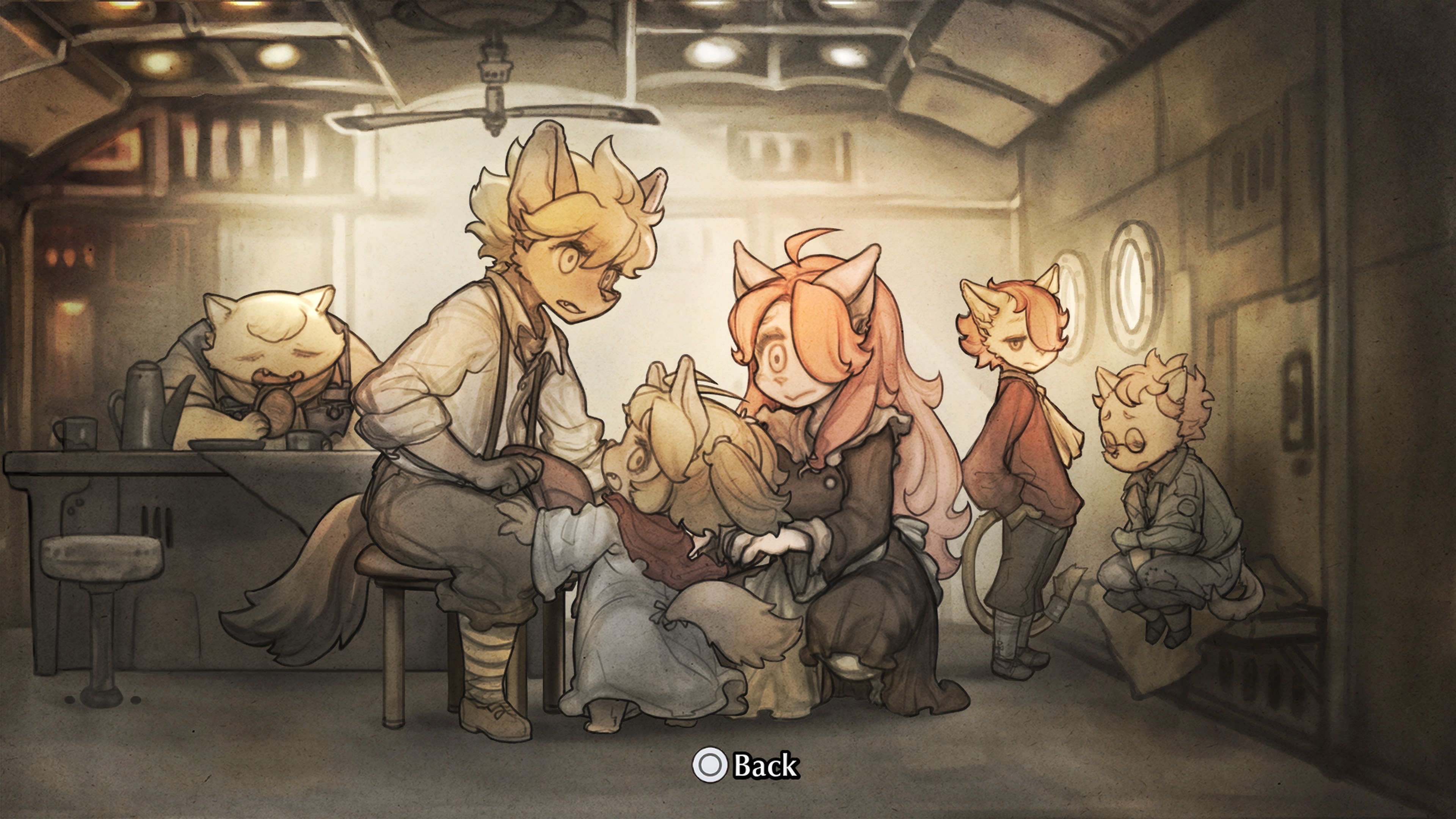
I think going with still images over cutscenes was a good choice, as the art style has this fantastic blend of softness in its linework and colors while still having strong detail in the designs and backgrounds. Each cutscene is a treat for the eyes, and I constantly found myself waiting to move on from dialogue until I was done appreciating the art.
Even the in-game models from the intermission sections, though obviously less detailed, maintain that aesthetic:

I cannot stress how much I enjoyed this game. The problems I talked about above weren’t enough to break my fixation on the game, and I ended up dedicating all of my free time to beating it, and then said “You know what would be funny?” and said “Hey, I think I’m–”
Going for the Platinum Trophy
Because I managed to get the true ending in my first playthrough, I actually only had a few trophies remaining to get the platinum, so I decided to go for it before I get to Fuga 2. The platinum is pretty simple! Most of those trophies are collected if you beat the game without sacrificing a single child (and completing a specific requirement for one kid I will not spoil here), fully upgrade every facility on the tank, and actually use those facilities consistently.
At the start of my second playthrough, there were only two trophies that actually required a grind:
- Shared Destiny: Raised Affinity to Level 10 with 30 Pairs
- Expert Team: Reached level 50 with all characters
As said before, these two were especially longwinded, especially the leveling, but by focusing in on exactly what these trophies require, you can likely complete it within a single additional playthrough like I did. As such, if you’re an achievement hunter, Fuga won’t give you any real misery.
Is this something I’ll do for all three games? Only time will tell!
But with that, we reach the end of my review. The first Fuga is a wonderful game that I cannot recommend enough. Its story is all about the importance of finding strength in those around you and refusing to give into despair even in the face of death. A story about how prejudice is a poison that can consume us, and how reaching out a helping hand to those who need it is the first step to building bridges. But most importantly, it says that if something is important to you, if it TRULY MATTERS, you have to keep fighting for it no matter how scared you are. It's the only way to protect those you care about.
Fuga is a timeless game, in message, in aesthetic, in gameplay. I'm already gearing up to dive into the sequel because I NEED more.
I don’t believe review scores are particularly useful, so instead, I’ll just say that if everything I’ve said here tickles your interest, look into Fuga: Melodies of Steel! If you have thoughts on the review, feel free to reach out to me on bluesky!
To close this out, please allow me a moment of humanity.
One Last Thought...
